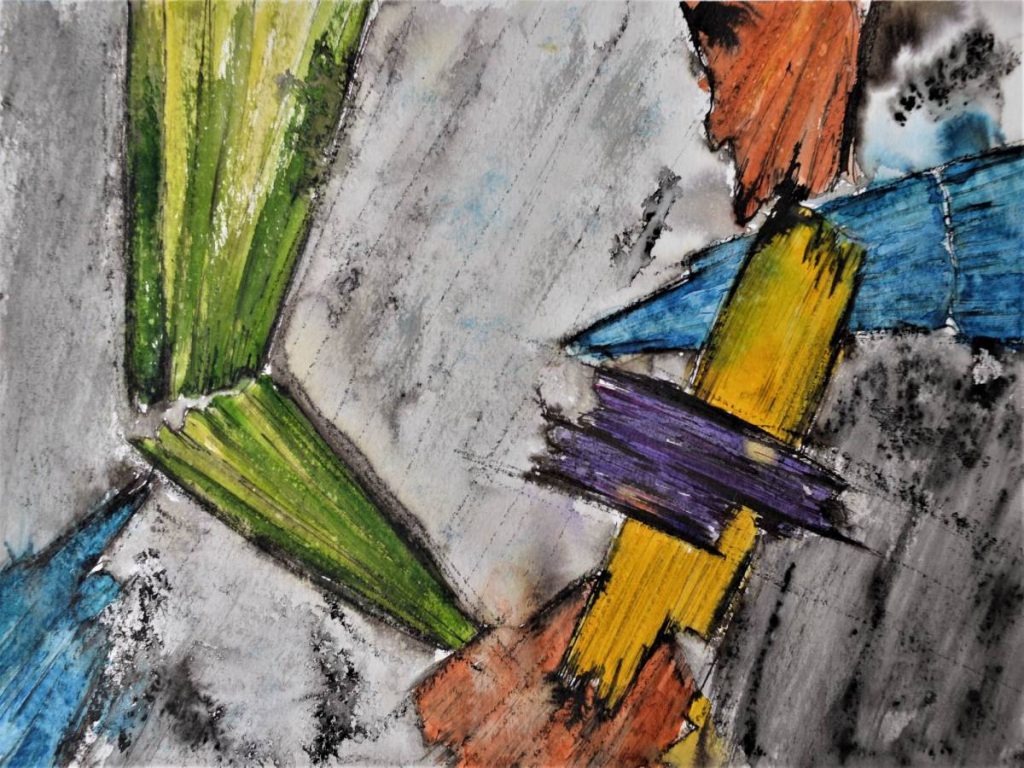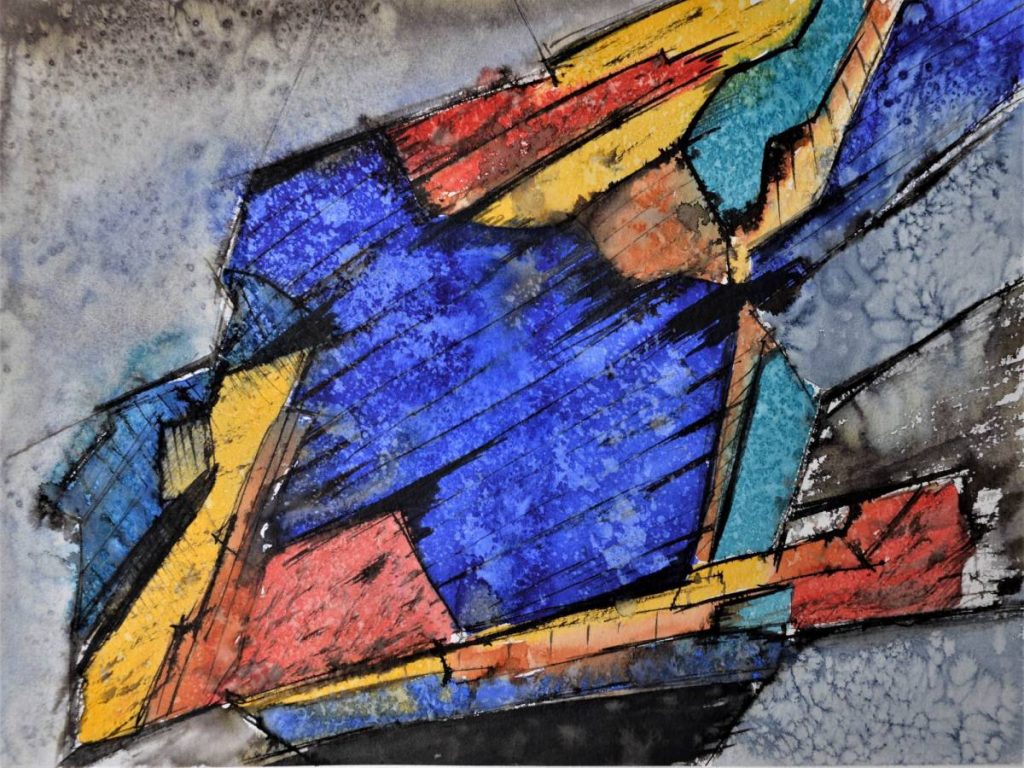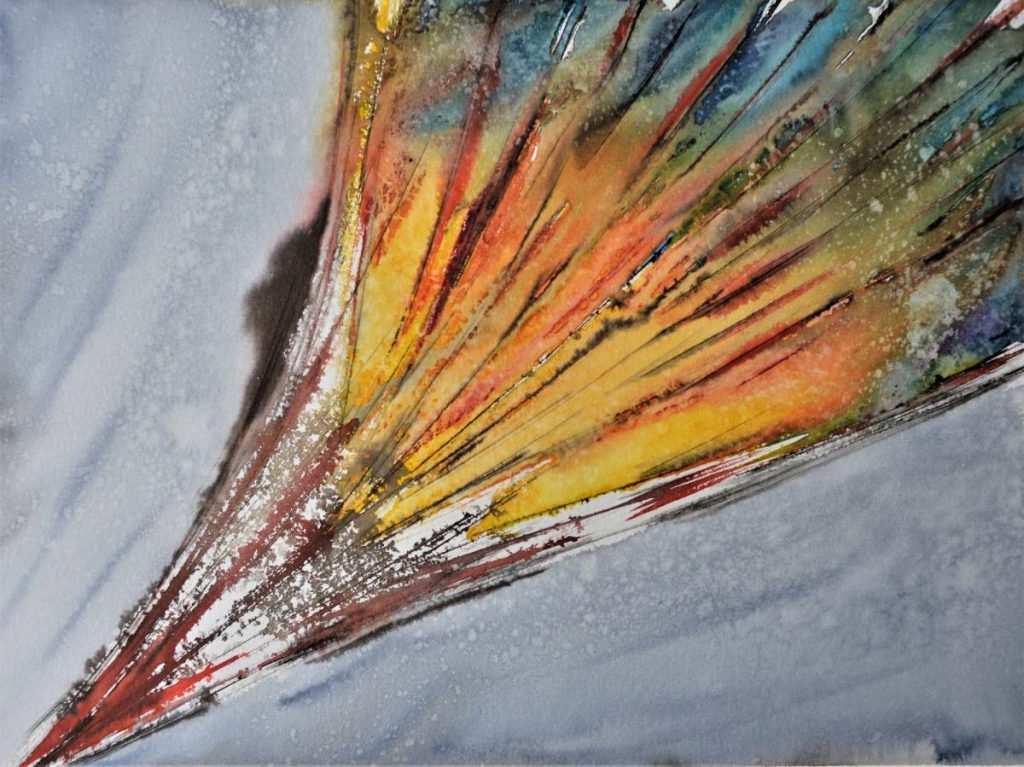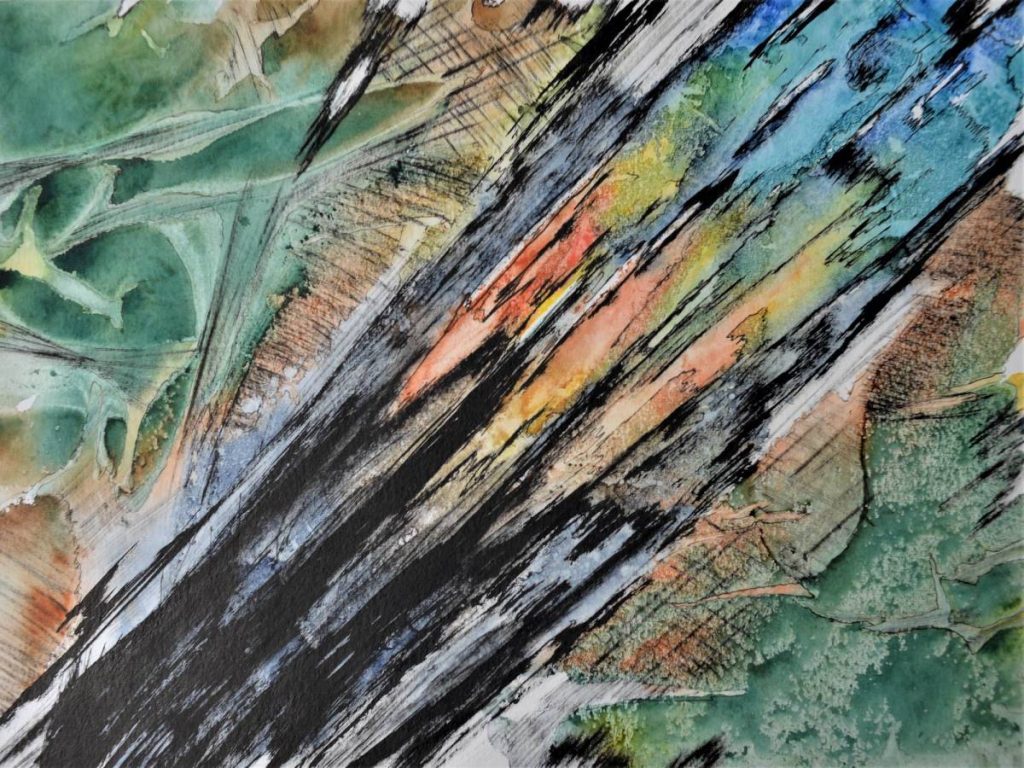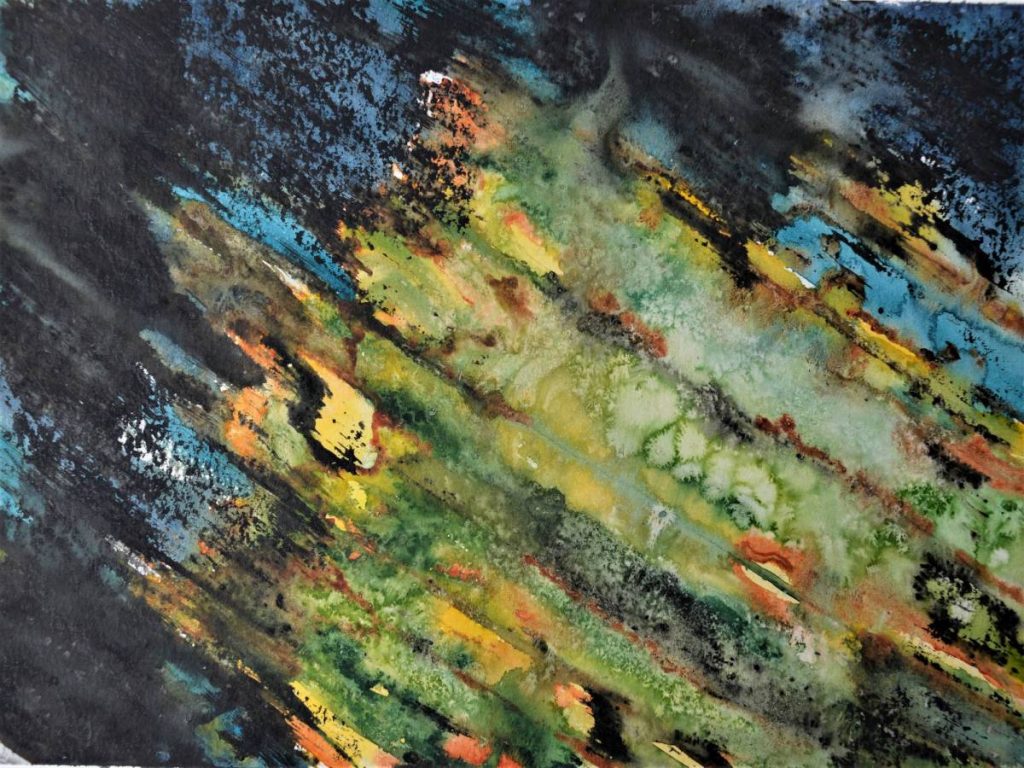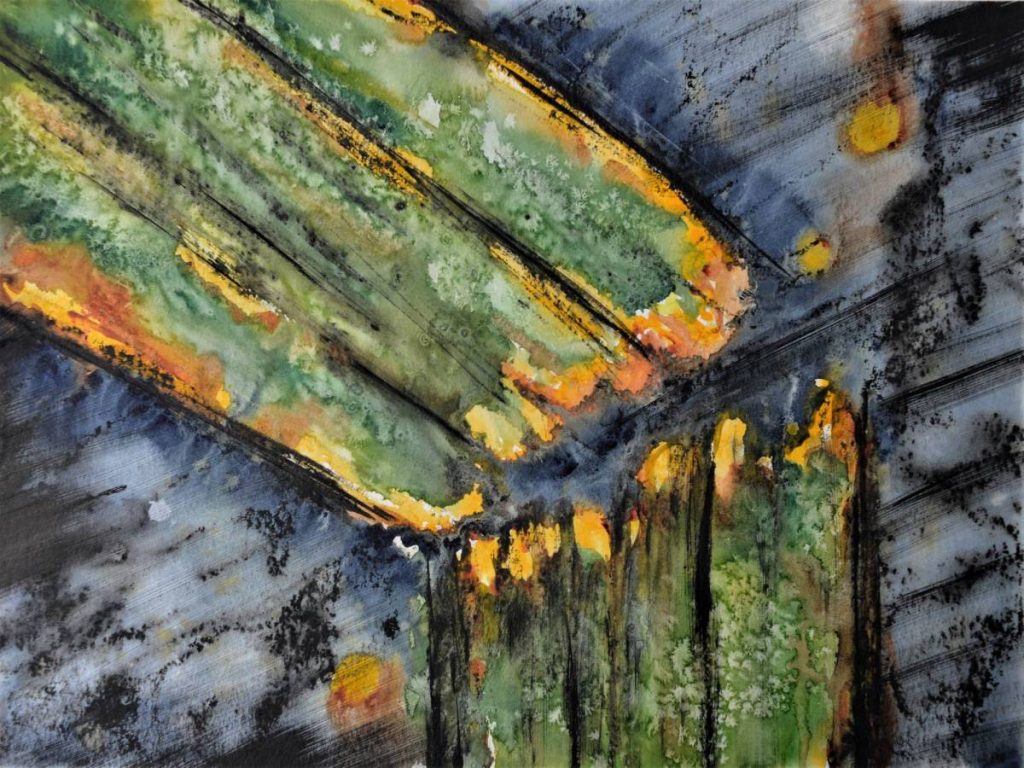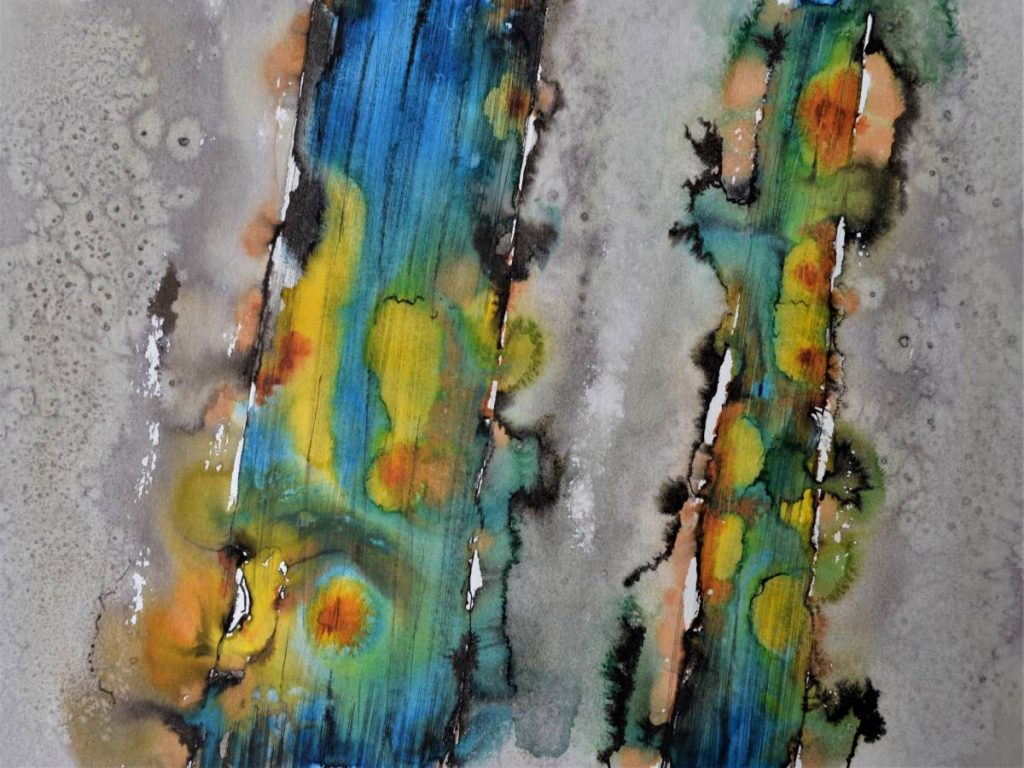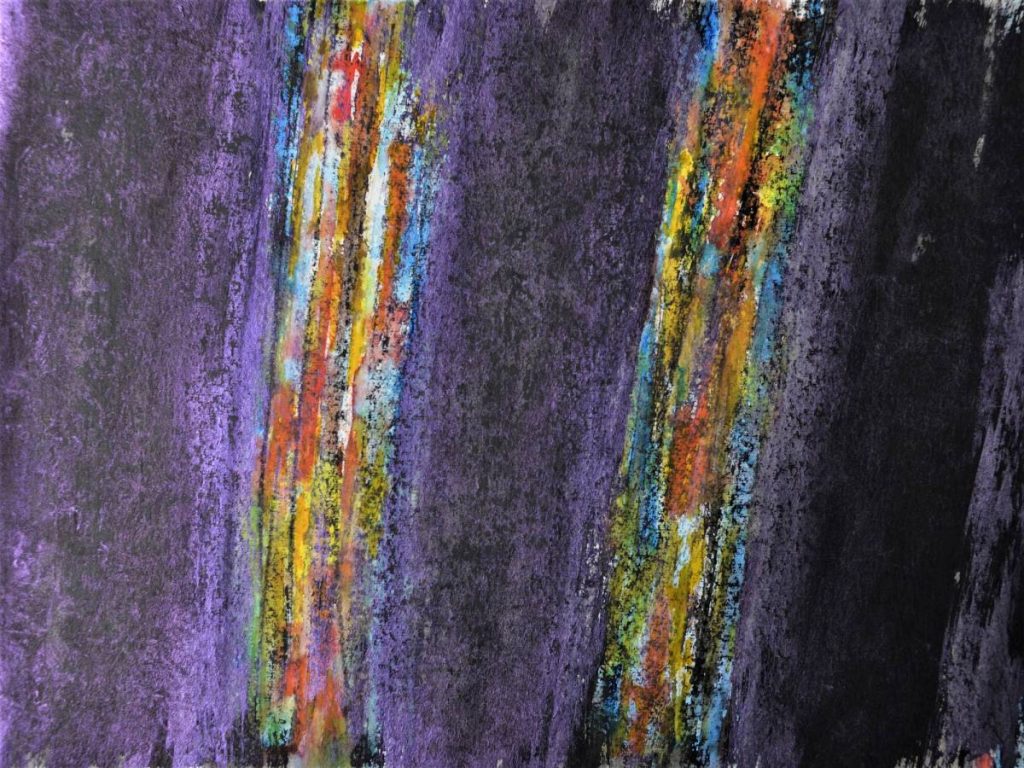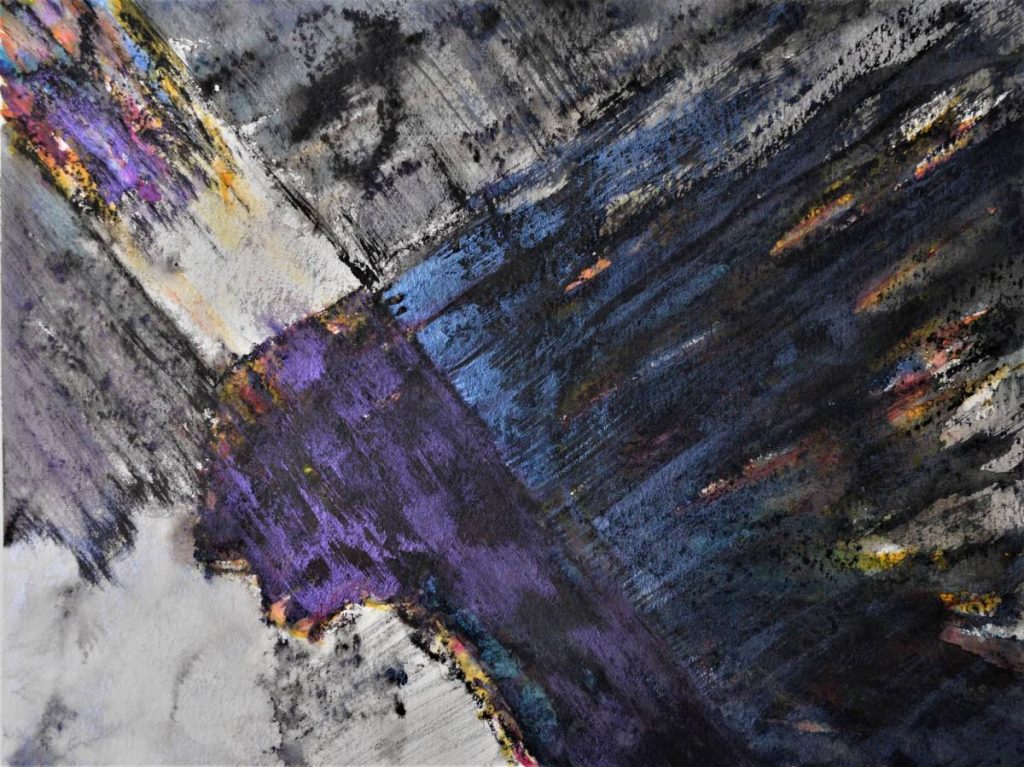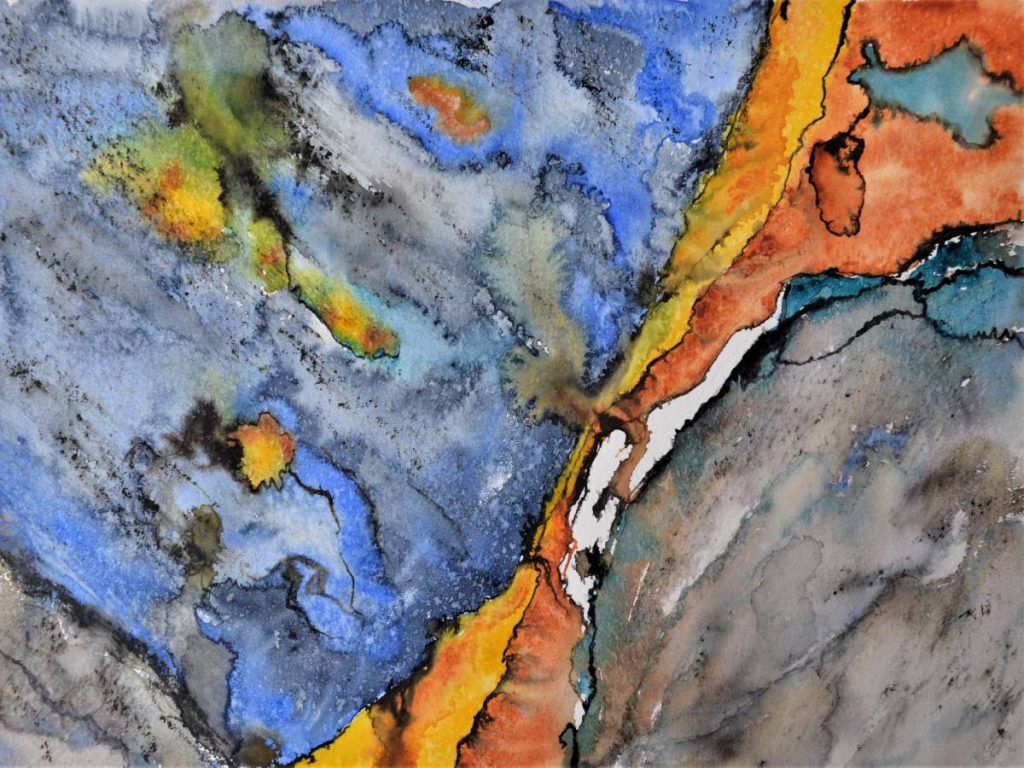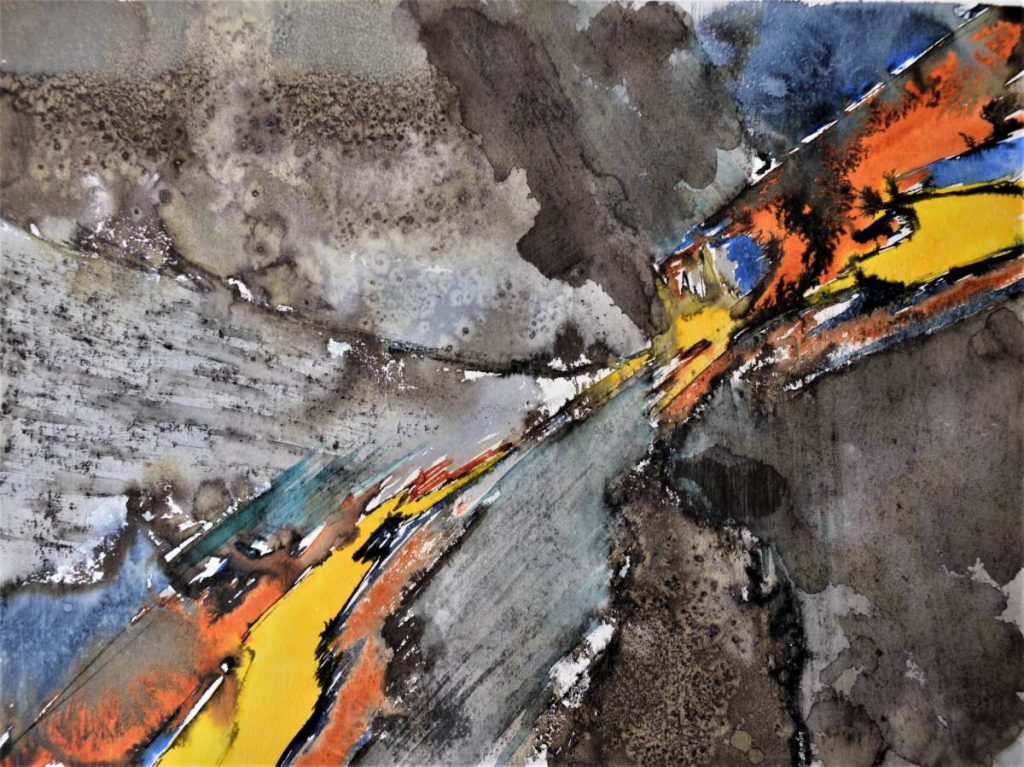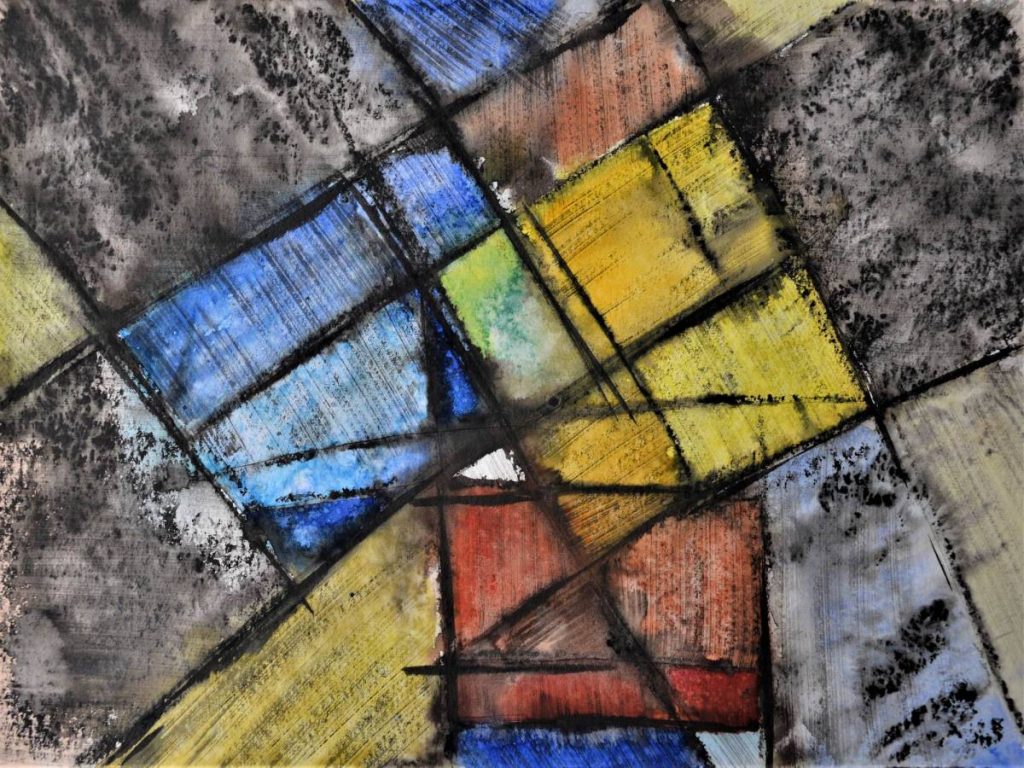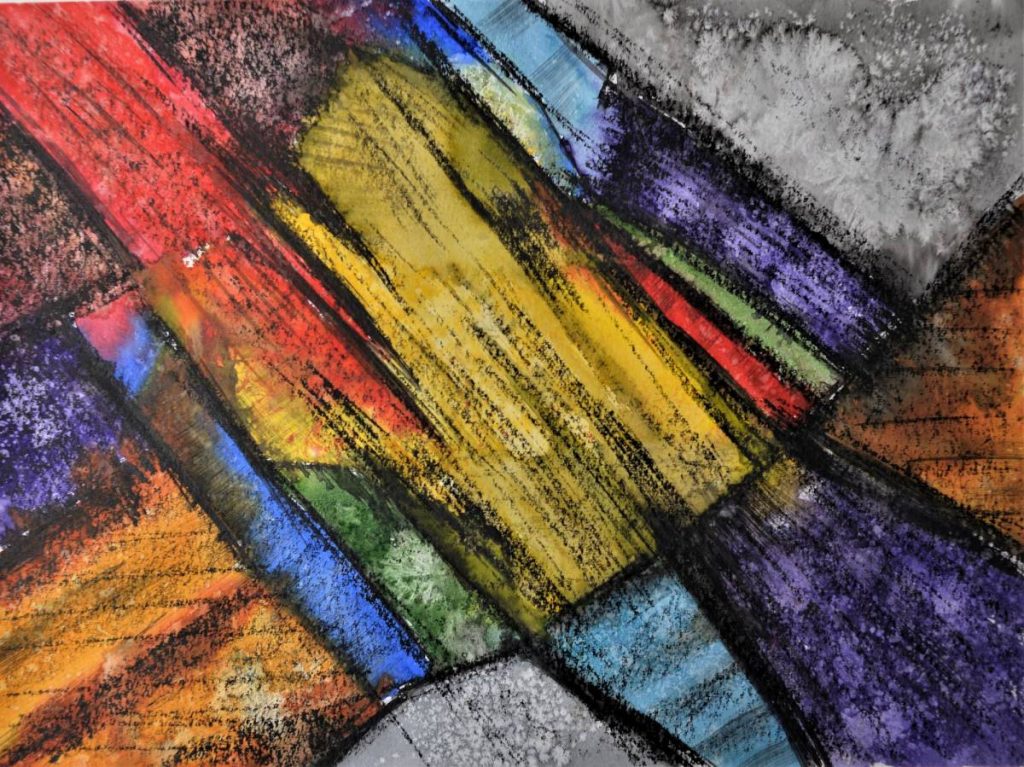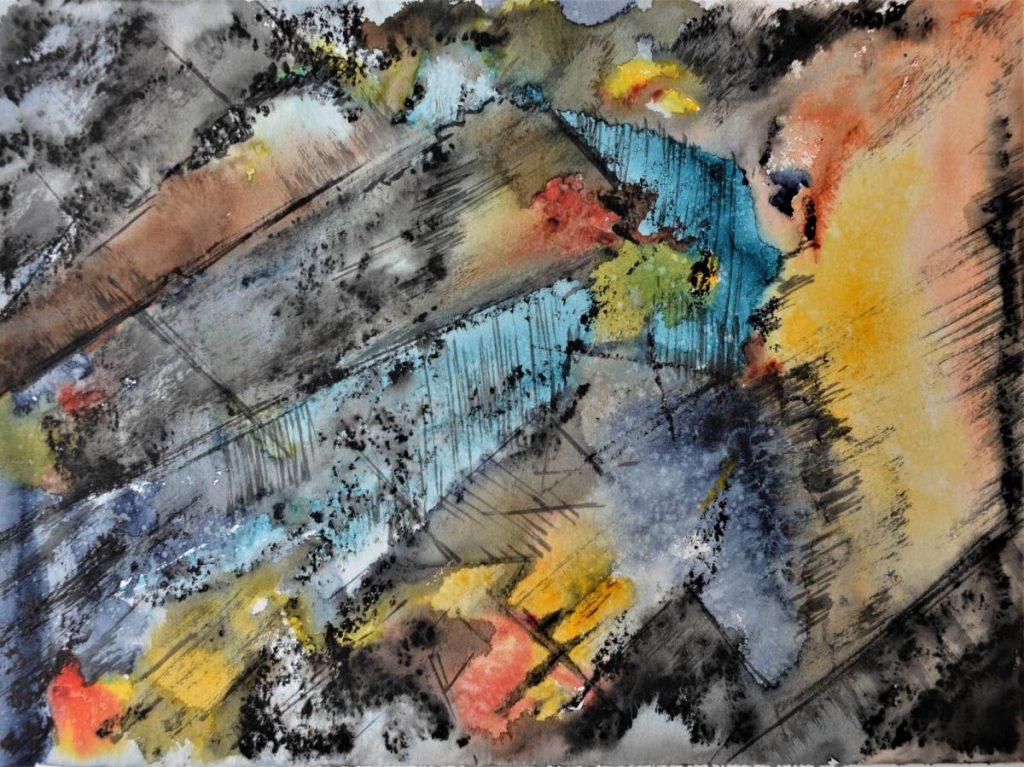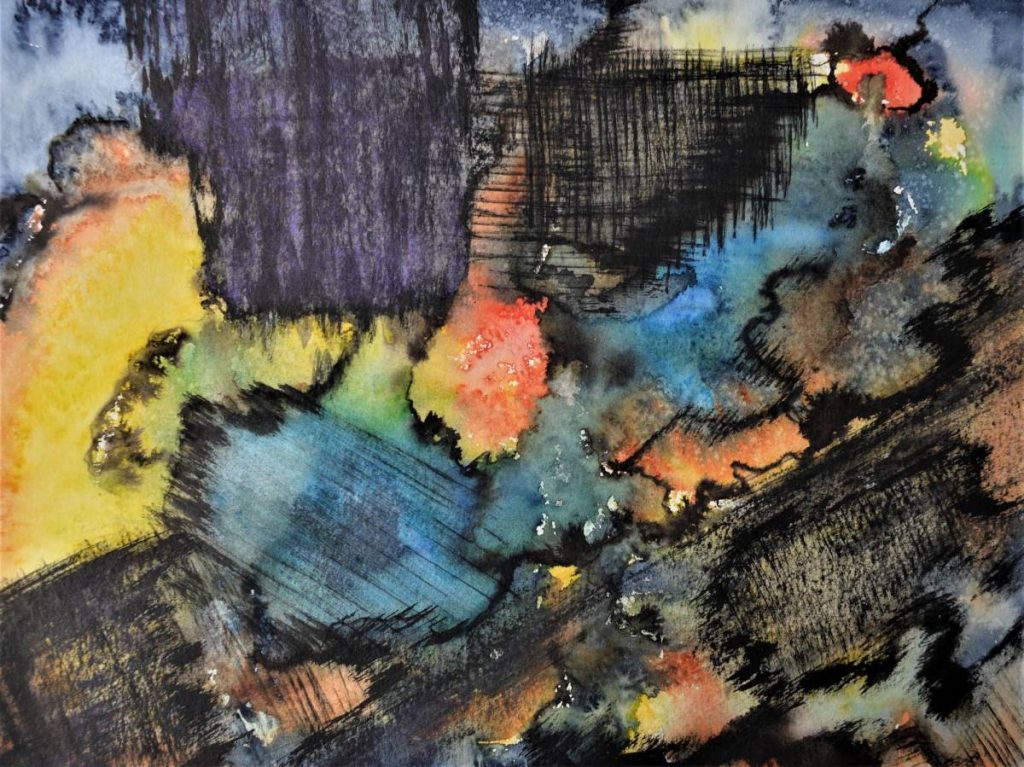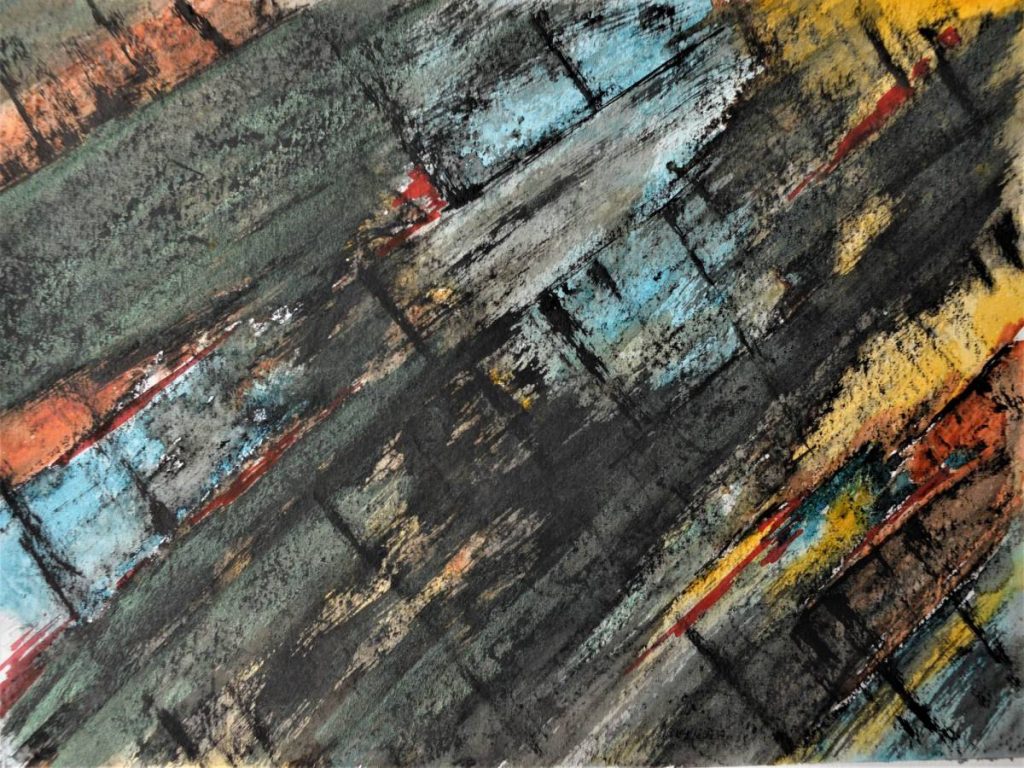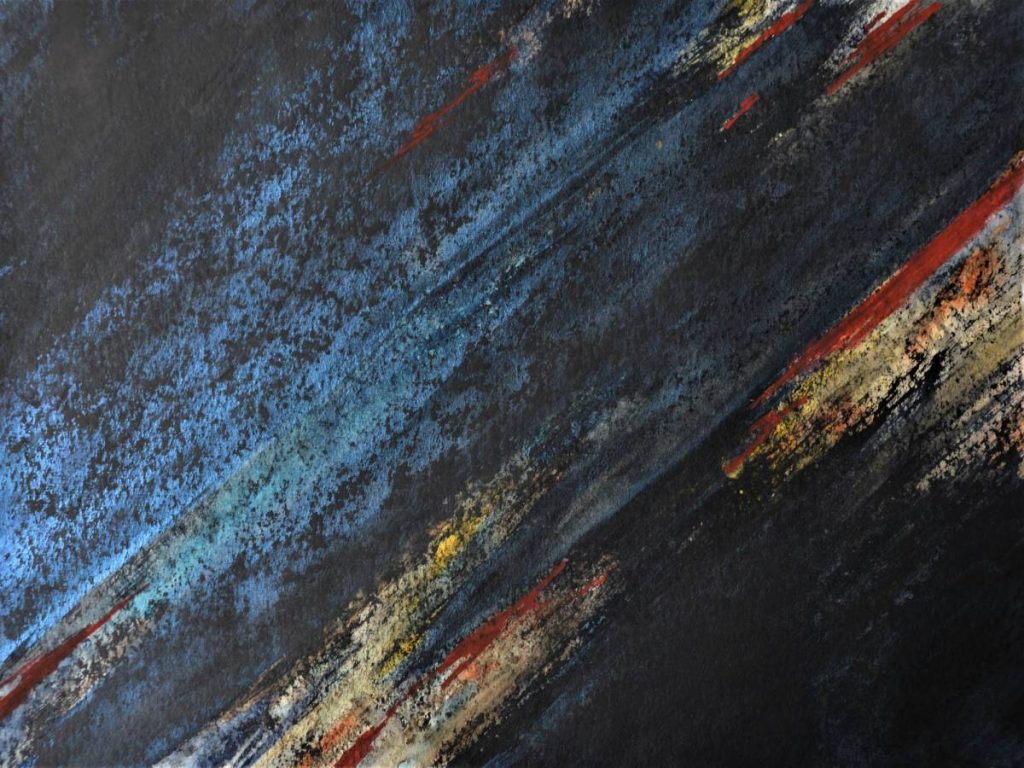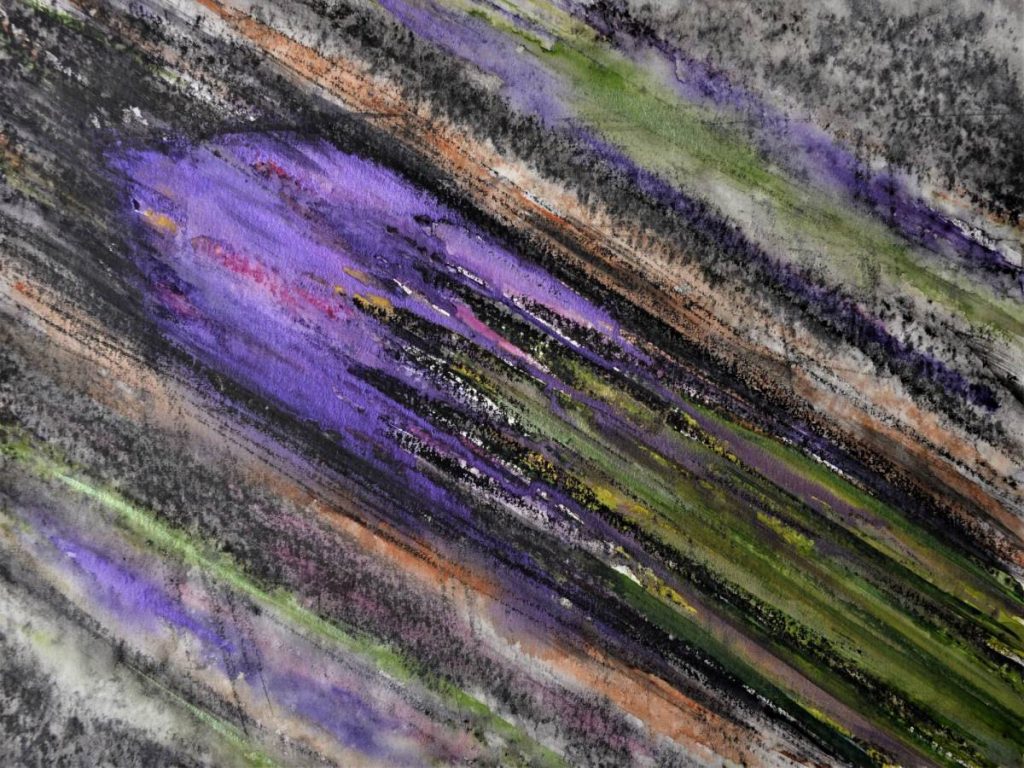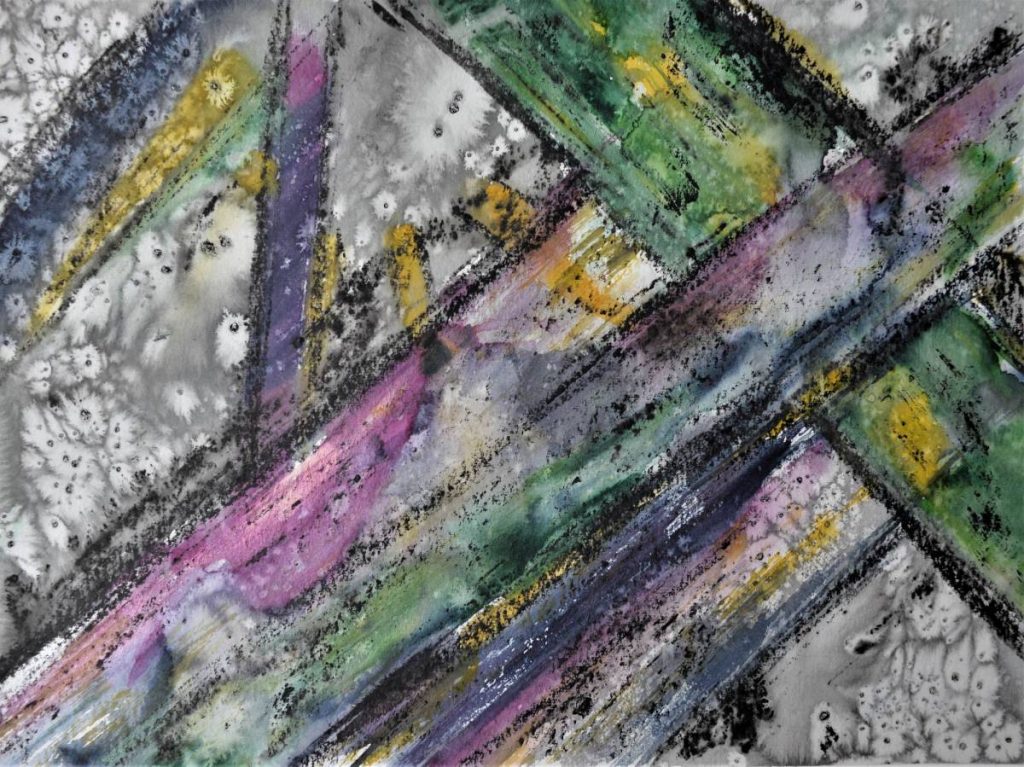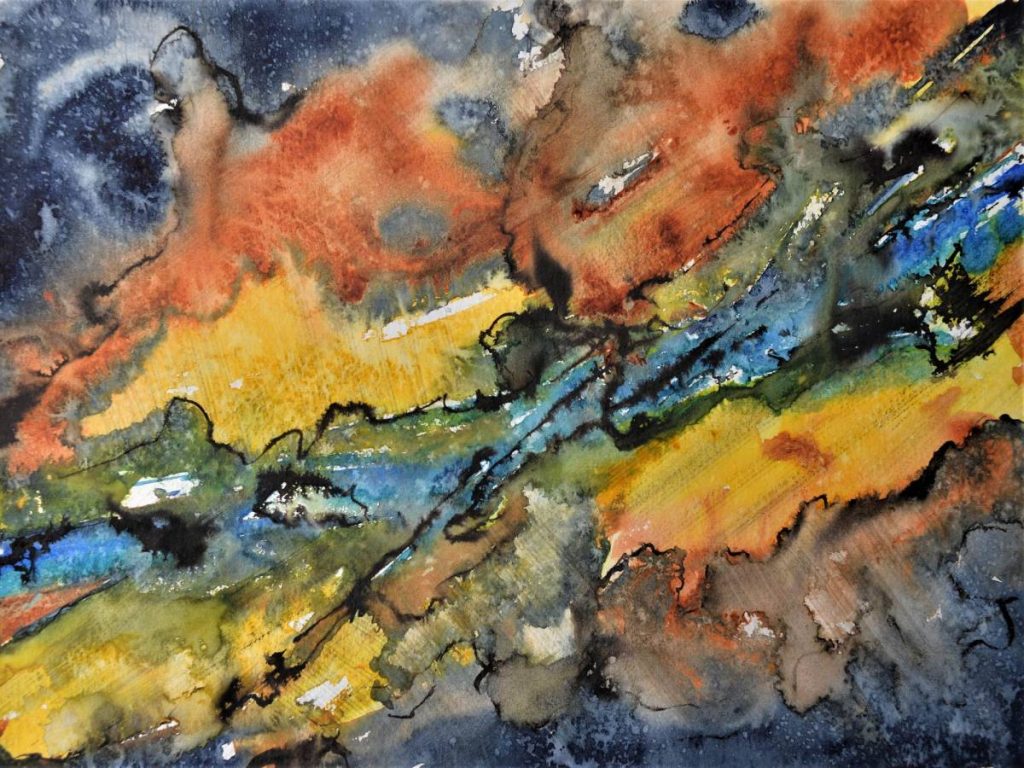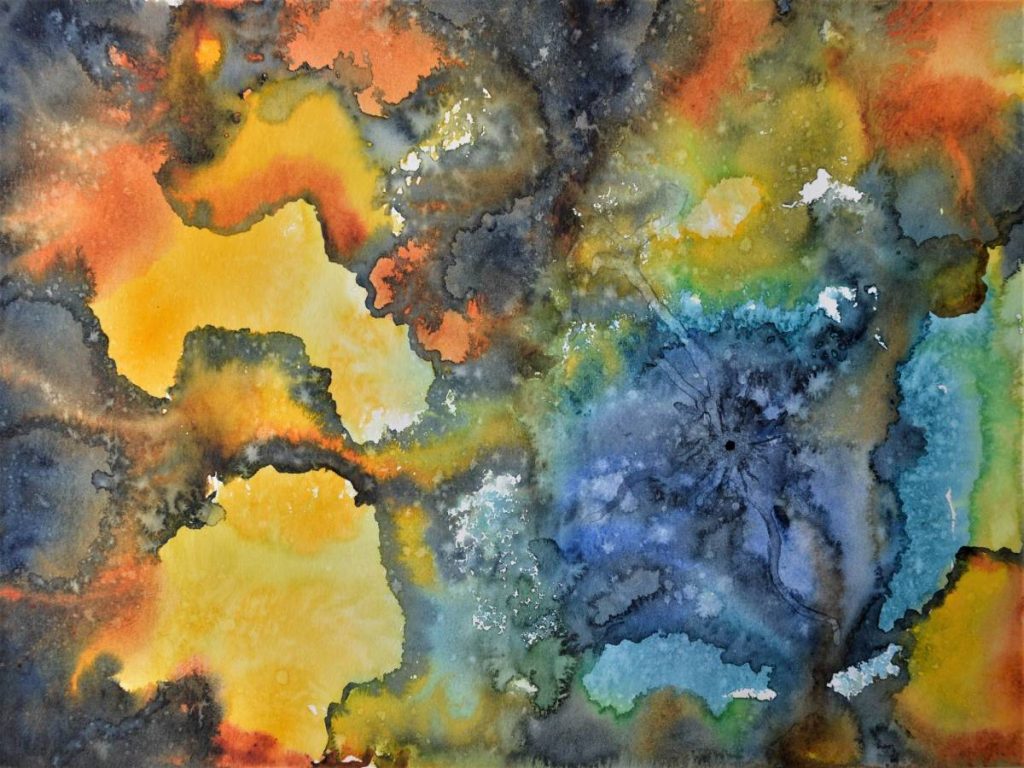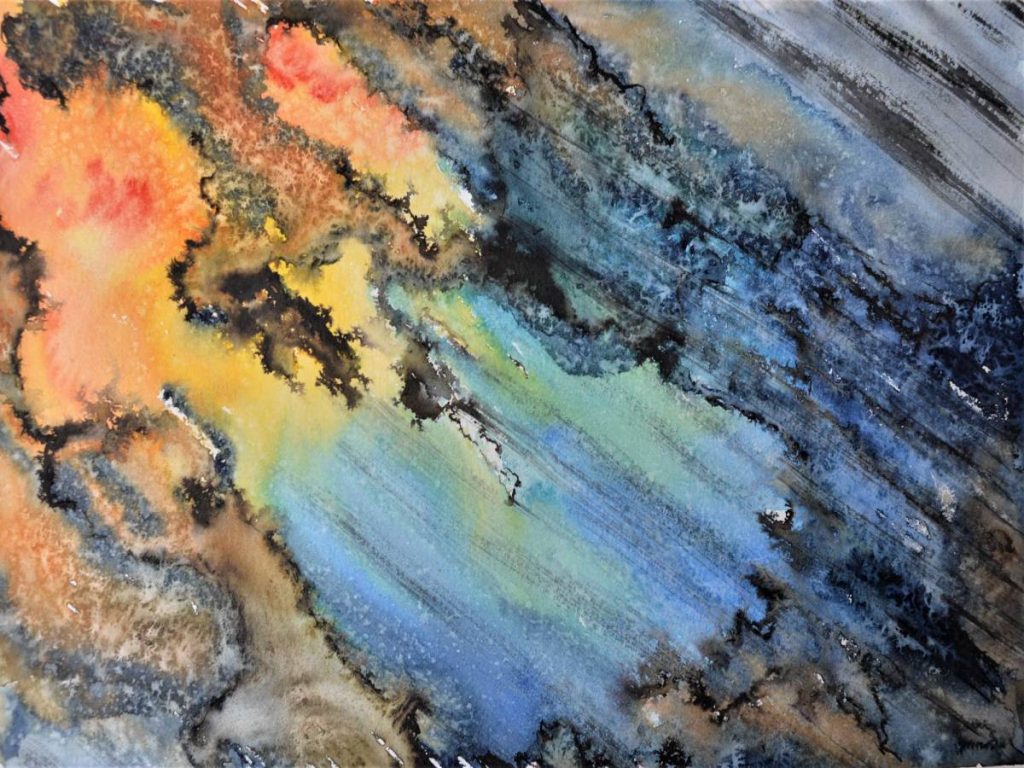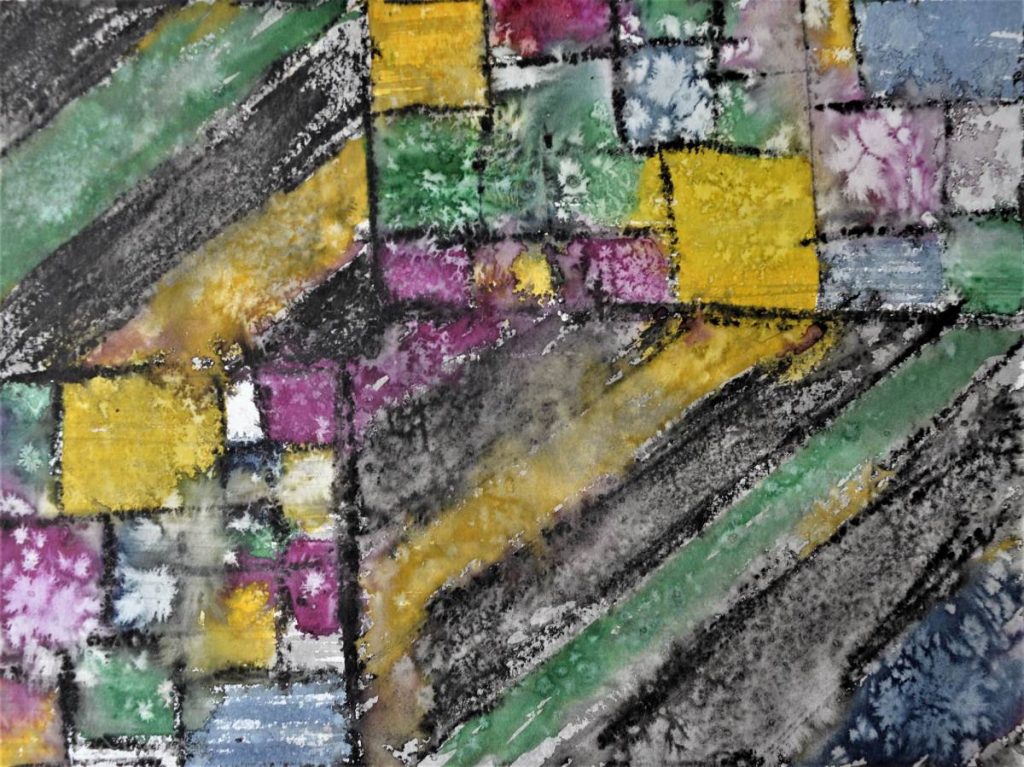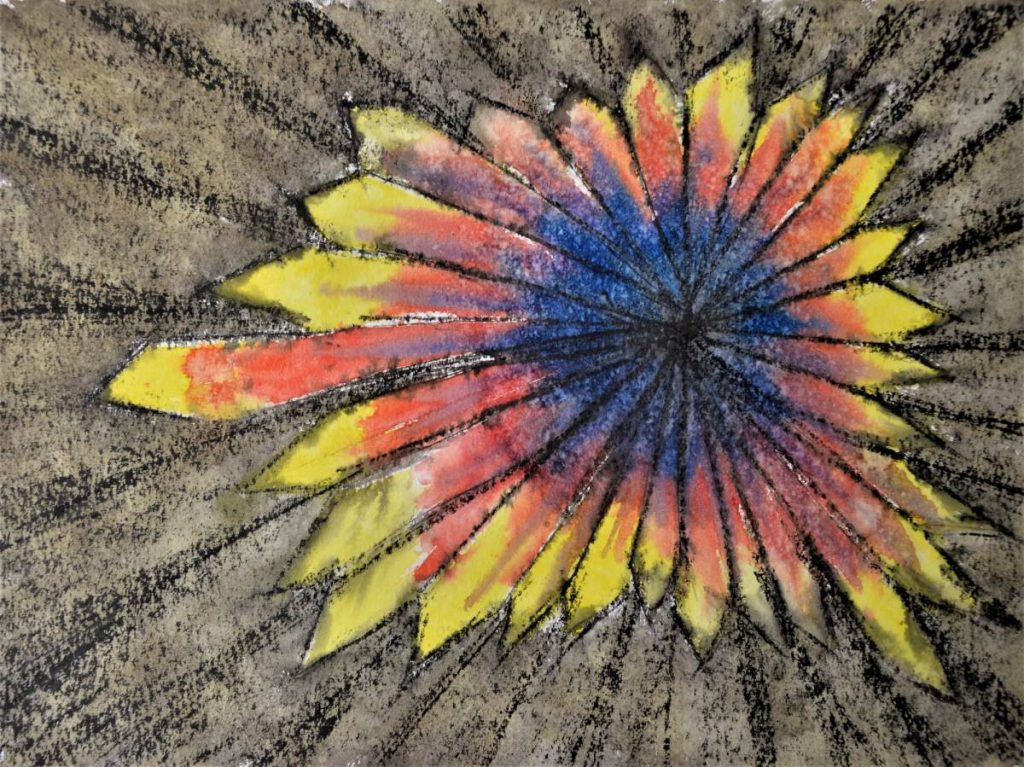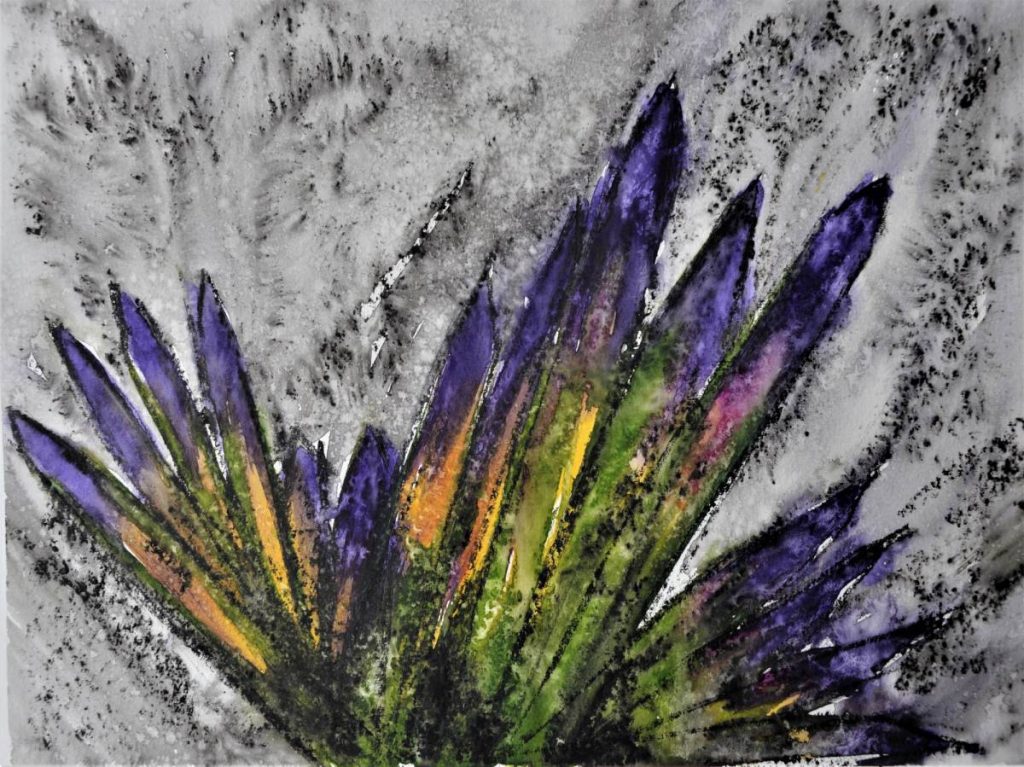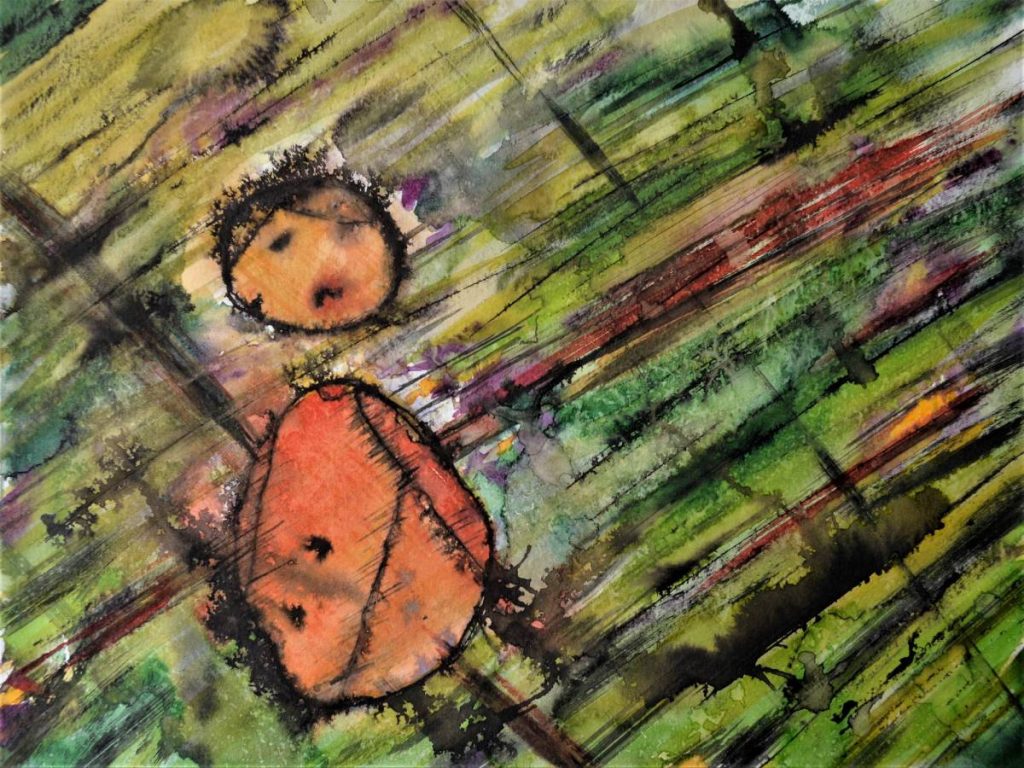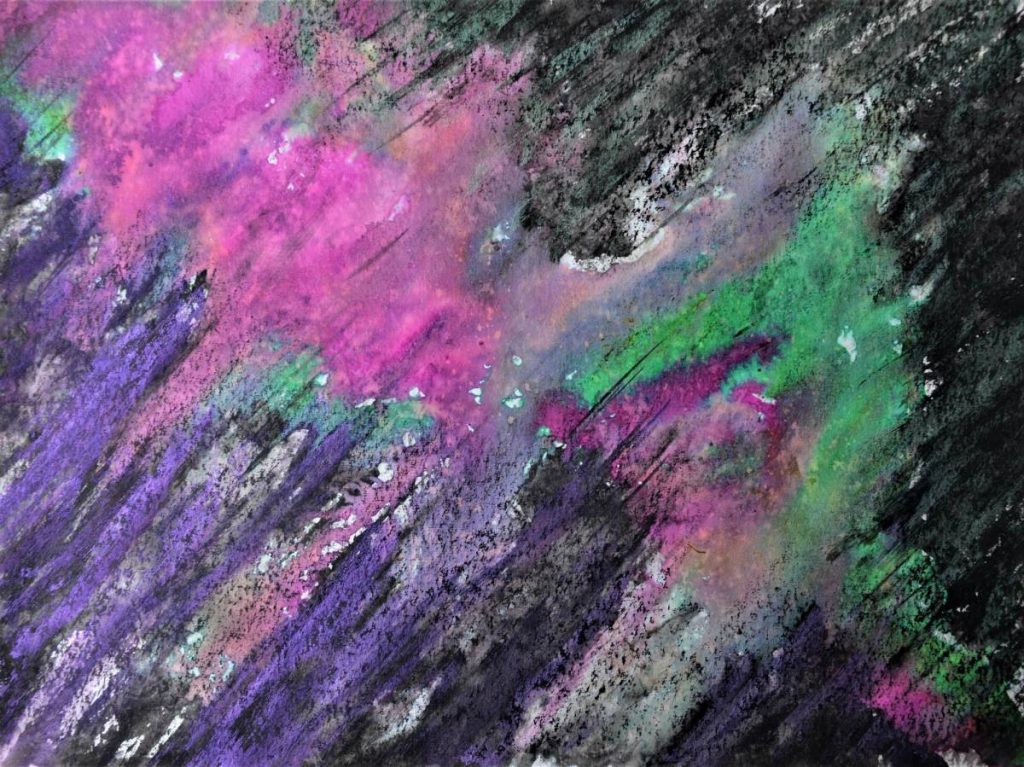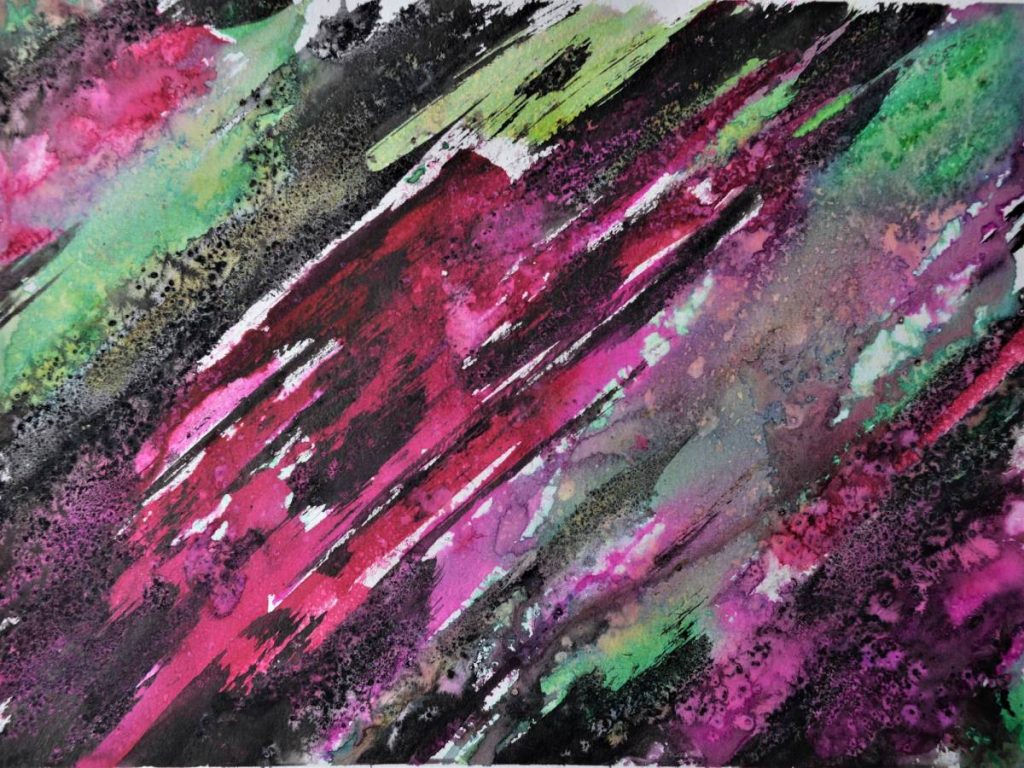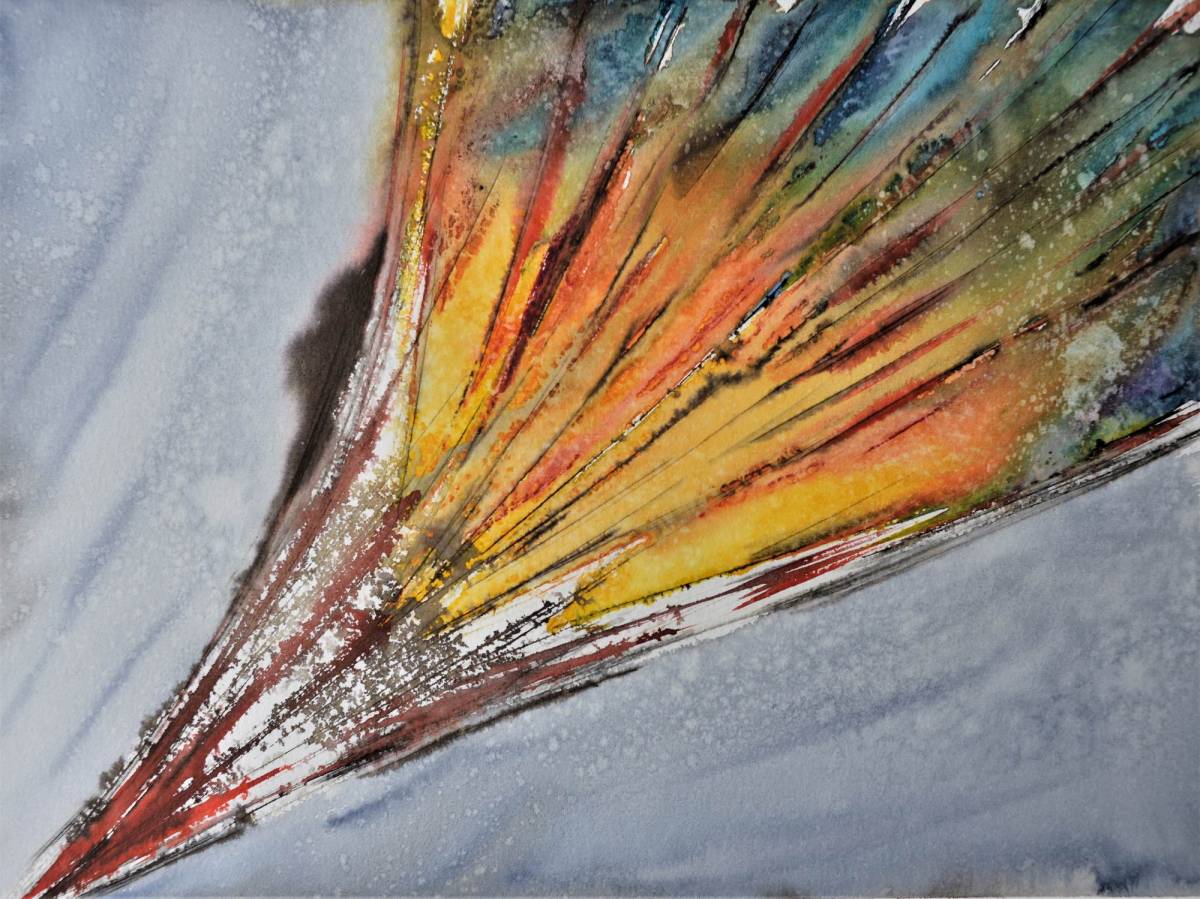Crystallographic forms in rocks seen under a microscope – science and contemporary art.
This topic was presented on November 27, 2020 during the Night of Researchers 2020 event, at the invitation of the Institute of Space Sciences.
Have you ever wondered what a landscape of one square millimeter looks like? To find out, we photographed sections of the rocks at microscope and later I painted a series of watercolors as an artistic endeavor.
Analyzes are carried out in the laboratories of the Department of Geology at “Babeș-Bolyai” University in Cluj-Napoca
microscopic on thin sections through different rocks, both for didactic purposes and within the projects of research. Head of works Dr. Horea Bedelean, with whom I collaborated on the scientific part, prepared the microscope for the mineralogical study, which has the role of determining the composition and properties the rocks. Thin sections through various rock types are about 20 microns thick and are glued with a synthetic resin on a glass slide. Microscopic field photography is done with an apparatus digital, attached to a special tube. Each mineral has specific properties by which it can be recognized, such as shape, color, cleavage, etc. All photos are raw images as seen under a microscope, in polarized light.
The series of paintings inspired by this scientific endeavor reveals a fascinating microcosm. The forms and
the specific colors of different crystals can appear abstract in an artistic vision. Their beauty can be
an invitation to more detailed exploration of what surrounds us. Technology and creativity can combine
to observe and learn new things.
Concept and description:
I have always liked nature! I was excited to discover my surroundings. Thus I studied Geography and the Faculty of Geology at Babeș-Bolyai University in Cluj-Napoca. Being passionate about art, I specialized in photography and started working as a photojournalist in 1998. Travel became very important to me. Both professionally and personally, I was able to satisfy my curiosity, to always see new places and meet interesting people. How many times have I not had the opportunity to be simply happy that I can see something new, that I witness some events and that I live for a moment in the present?…
During my Geology studies, in the years 1996-2001, I had the chance to discover not only diverse landscapes, but also to learn that nature is not strictly limited to what we see in front of our eyes. In the courses and laboratories of Mineralogy, Crystallography and Petrography, I was able to discover how the types of rocks are formed, but also to see their structure and composition in detail, under a microscope. The microuniverse unfolding through the eyepiece of the microscope was fascinating, unreal! Then I thought that normally, when we admire a real landscape, we have unfolded in our visual field a huge area, of tens or hundreds of hectares, with forests, valleys and mountains in the sky, with the sky on which we see heavenly bodies. But what would it be like to see just a fragment of this landscape? What does a surface of one square millimeter look like? Well, that’s exactly what I discovered under the microscope, in the laboratories of the Faculty of Geology.
After many years of traveling and having the chance to admire even aerial landscapes, I returned to that square millimeter, which can only be seen in detail under a microscope. My former teacher, who was also my mentor this year, Head of works Dr. Horea Bedelean, currently Vice-Dean of the Faculty of Biology-Geology, UBB Cluj-Napoca, offered me the chance to study together a few thin sections through different rocks . This time the goal was an artistic endeavor, to spot and identify those chromatic varieties, structures, cleavages and shapes of the crystals and their microscopic photography. It was a special experience. In the field of the microscope appeared some forms so unexpected and so beautifully colored, that you were really amazed to discover this hidden, unsuspected wonder! In front of such small discoveries you can realize once again how complex and beautiful nature is. You can’t help but share things like this.
The extensive series of photographs taken under the microscope were basically the documentary basis and were the source of inspiration for the watercolor paintings I did later. I admit that I questioned whether there was any point in painting anything else, having those original photographs so special. An interval of about four years passed before I dared to paint. Basically I synthesized in a visual way memories of that discovery. I did not set out to accurately reproduce those photographs, but rather tried to recreate those elaborate graphic structures, having a very special chromaticity, which you never see in a classic landscape. To reproduce all these aspects, I painted with watercolors that have special mineral pigments, some of which are even metallic shades. The end result is a series of over 30 paintings that can be seen both individually, but which can be assembled like a puzzle. This approach combines science with contemporary art. In addition to the didactic aspect, this project is also an invitation to research, knowledge and exploration of what surrounds us, even if it is just a speck of dust. What we see with our mind’s eye can be just as interesting as what we see in real life!
